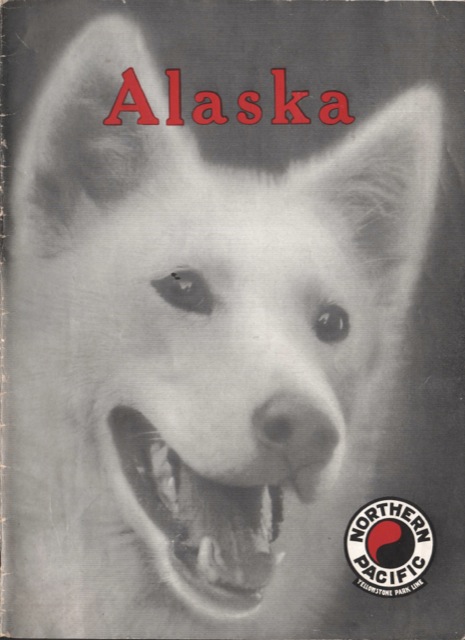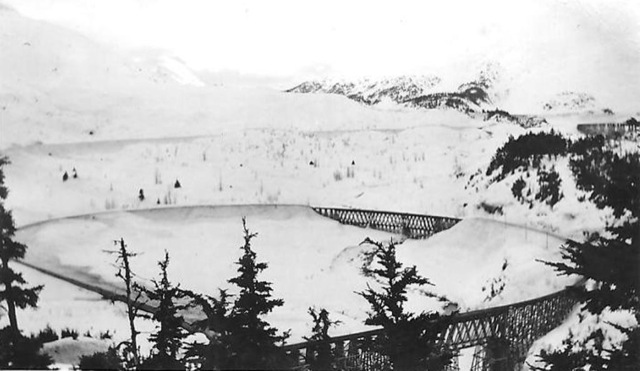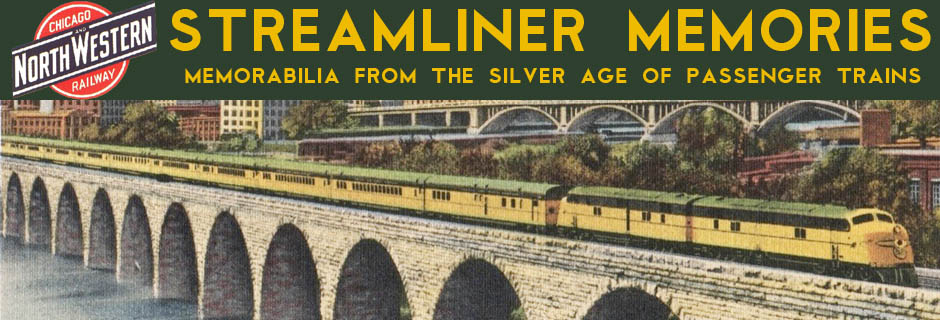This 32-page brochure includes 23 pages of photos with a full-page map and about eight pages of text. In 1938, most travel in Alaska was by boat or train, so the brochure features several photos of the Alaska Railroad. Curiously, there are no photos of the White Pass & Yukon Route, though there is one small photo of Martin Itjen‘s Skagway Streetcars (the modern incarnation of which are run by Steve Hites).

Click image to download a 29.5-MB PDF of this brochure.
The text in the back of the booklet briefly describes six different package tours. Starting from Chicago or the Twin Cities, the tours range from eight to twenty days (extendable up to 35 days) and cost between $200 and $550 (around $2,600 to $6,500 in today’s dollars), depending on length of tour and accommodations. The cheapest tour is simply a train to Seattle and a steamship cruise from Seattle to Southeast Alaska, while the most expensive “Yukon River Circle Tour” includes a steamship to Skagway, train and steamboat to Fairbanks, a train to Seward, and steamship back to Seattle, with stops at McKinley National Park, Anchorage, and many other locations along the way.

This photo, taken in 1944, provides a clearer view of the Alaska loop than the one shown in the booklet. Click image for a larger view.
Page 23 has a full-page photo of a loop on the Alaska Railroad in the Kenai Mountains between Seward and Anchorage. Before it was bypassed in 1951, this may have been the largest railroad loop in North America. Where the famed Tehachapi Loop gained 77 feet on a 2-percent grade, this brochure claims that the Alaska loop gained 150 feet feet on just a 1-percent grade. However, this photo makes it look a lot less than 150 feet. Whatever the gain, as this map shows (with dashed lines for the original grade and a solid line for the post-1951 grade), it was an interesting piece of engineering.
